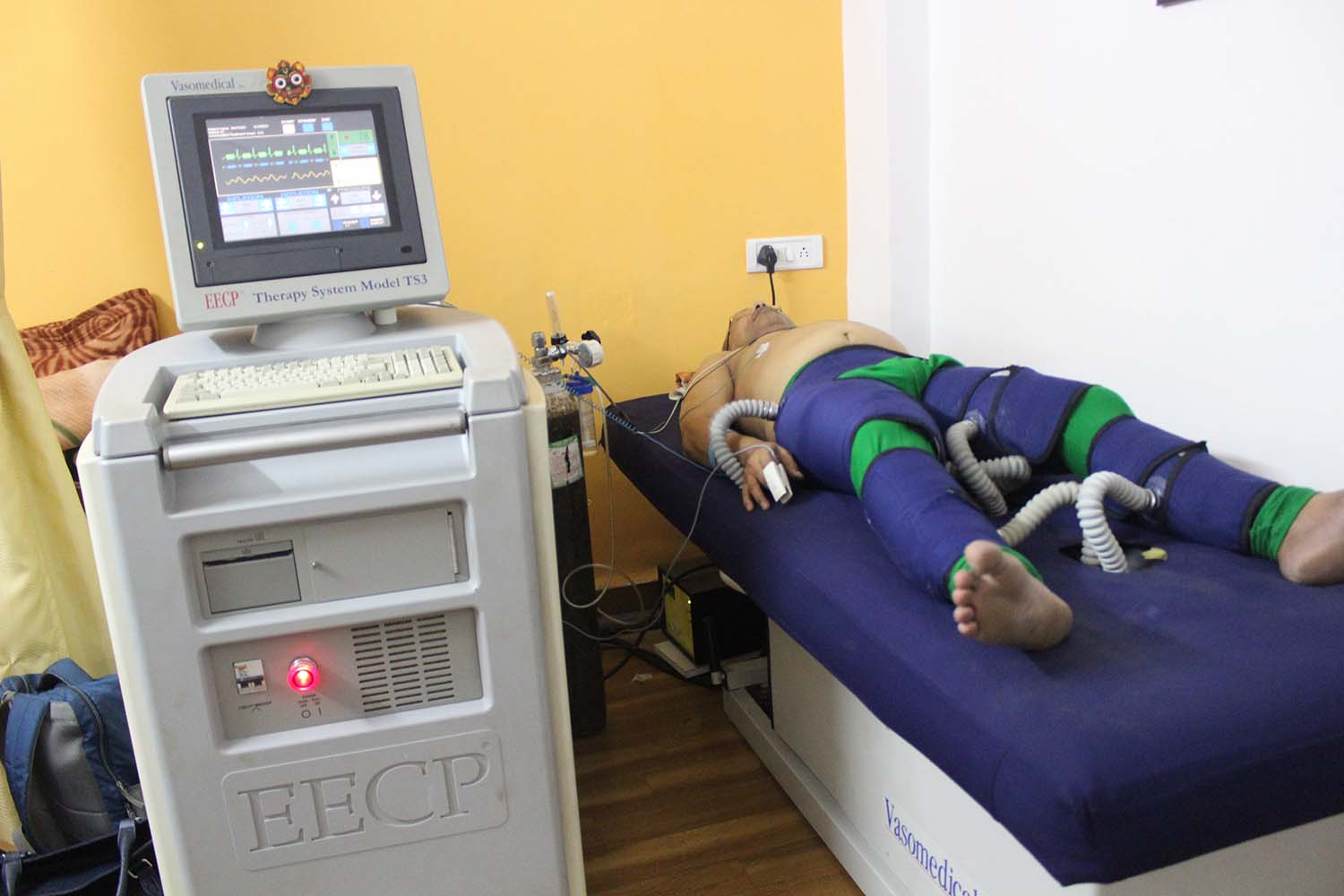EECP: An Innovative Alternative for Bypass Surgery

The majority of the time, medicines, angioplasty, or bypass surgery are prescribed by doctors to treat coronary artery blockage. These therapy approaches are highly successful, however, they might be problematic when dealing with chest discomfort.
The effectiveness of medications and other invasive treatments varies. If the restricted area’s blood supply is restored, the condition grows worse. This ailment is referred to as angina.
Efficient non-invasive treatment therapy is necessary to lessen chest discomfort and may also enhance your quality of life. The non-invasive, natural alternative therapy known as EECP therapy can help you recover from angina. As this course of treatment is still quite new, many patients have questions that they ask us. The questions that are most frequently asked are covered below.
EECP – Enhanced External Counterpulsation
Alternative non-invasive outpatient therapy for chronic stable angina and its anginal analogs, such as tiredness, shortness of breath, or chest pressure, is enhanced external counterpulsation (EECP).
Patients who have tried all other possible treatment options, such as bypass surgery, angioplasty, arterial stents, or antianginal drugs, may be advised to undergo EECP.
EECP may give advantages even after the therapy has ended, and some patients stay symptom-free for years. Depending on the symptoms and the requirements of each individual’s insurance, EECP may need to be repeated.
EECP employs cuff-like attachments on the upper and lower legs that improve blood flow to the heart by squeezing in sync with the cardiac cycle and rhythm.
Encouraging the development of new blood vessels (collaterals) and redirecting blood through neighboring branches, may aid in the blood flow around blocked or partially obstructed arteries (called collateral circulation).
What Advantages Can EECP Treatment Offer?
An easy, safe, and non-invasive therapeutic alternative is EECP therapy. The following benefits of choosing this course of therapy are highlighted:
- Although EECP treatment is a therapeutic treatment option, it has no impact on a patient’s regular day-to-day activities.
- This course of therapy is quite affordable because there is no requirement for surgery or a hospital stay.
- After a therapy session, the majority of patients feel energized.
- Once the therapy is complete, patients can resume their active lifestyle.
- You may walk a long distance without having any chest discomfort since EECP entirely eliminates it.
- Complete angina treatment using EECP is non-invasive.
- The treatment reduces the need for antianginal drugs since it treats angina.
How Long Does It Take To Finish The EECP Treatment?
Depending on the patient, EECP therapy may last for a different amount of time. The length of each therapeutic session is about 35 hours. Five days a week, every day for an hour.
To achieve the best results, the patient shouldn’t miss a therapy appointment. One can feel better for at least three years after finishing the entire therapy session.
How Effective Is The EECP Treatment?
The effectiveness of EECP therapy varies greatly depending on the patient. In certain situations, clinical investigations have shown positive outcomes, with an average improvement in circulation and other symptoms of 70%. To determine the EECP’s long-term efficacy, more study is necessary.
Can EECP Take The Role Of Bypass?
No, EECP (or Enhanced External Counterpulsation) is a non-invasive technique used to treat coronary artery disease. Nevertheless, bypass surgery in Gujrat, which reroutes blood flow around a blocked artery, is intrusive.
Reach Saaral Heart Center For EECP!
If you’re seeking new and effective ways to maintain your heart health, a visit to Saaral Heart Center might be a good option. Enhanced external counterpulsation, often known as EECP Therapy in India, is a novel form of therapy that Opus provides.
EECP treatment in Surat gives patients a less intrusive, non-surgical alternative to more invasive therapies like stents or bypass surgery for their cardiovascular system.
This procedure includes wrapping a machine around the patient’s chest and arms and gently compressing the arteries and veins in the lower part of the body.
The coordinated contractions can even lower the risk of heart attack and stroke while assisting in reducing symptoms of congestive heart failure and coronary artery disease.